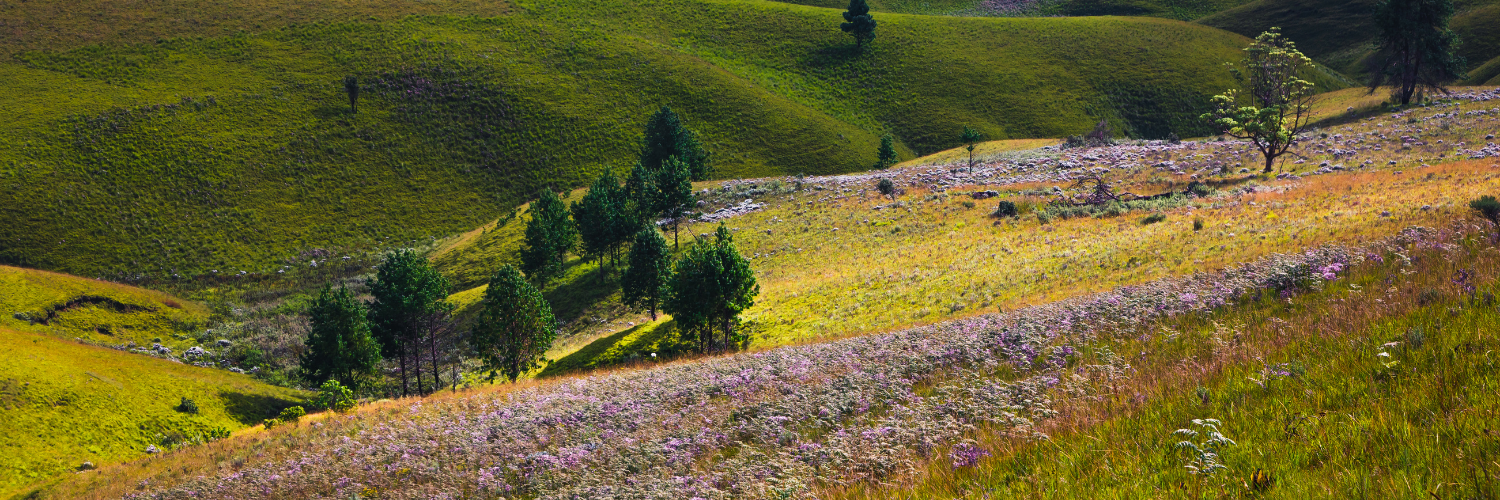
Kitulo Plateau National Park
Searching for an exceptional safari excursion? Tanzania may be simply what you are searching for. With a plenty of guided safari alternatives and national parks to visit, there is certain to be something for everybody. Placed in East Africa and home to 14 national parks with an abundance of wild creatures one of a kind to this area alone, guests are certain to have a different experience.
Kitulo Plateau is known by the Local people as Bustani ya Mungu which means The Garden of God. Because of its beauty, botanists have named it the Serengeti of Flowers, host to ‘one of the extraordinary botanical exhibitions of the world’. Also Kitulo is surely an uncommon natural wonder, home to a full 350 types of vascular plants, including 45 assortments of physical orchid, which emit into a crazy wildflower showcase of amazing scale and assorted qualities amid the fundamental blustery season generally November to April.
In 2002, Kitulo turned into a completely ensured National Park. The park is arranged on the Kitulo Plateau in the isolated southwest crook of the border of Tanzania and Zambian. It is such a remote end of the line, to the point that it is barely gone to by vacationers. The park’s significance is remarkable as the range is an uncommon organic wonder. Kitulo is the first range in Africa to be ensured for its remarkable blooms. Just about 200 types of bloom happen in the Southern Highlands with numerous species being endemic to the range.
Location and Size of Kitulo Plateau National Park
Roosted at around 8,500 ft. (2,600 meters) Between the tough tops of the Poroto, Kipengere and Livingstone Mountains, the generally watered volcanic soils of Kitulo supports the biggest and most important montane meadow group in Tanzania. It is found Southern Tanzania, 60 mi (100km) from Mbeya town. Park central command is at Matamba.
The park is referred to provincially as “God’s Garden” or the “Serengeti of Flowers”. It is a genuinely new Tanzania safari park and was made in 2005. It is the main park in the tropical African districts committed to the security of wild verdure and because of the way that it is still moderately obscure; the guest numbers are low, which is uplifting news for those searching for a more select and uncrowded experience. The Plateau has a special blend of Afroalpine and Afromontane fields where for around six months of the year amid the stormy season from November to April – is secured in a lovely cover of indigenous blossoms.
Special Features of Kitulo Plateau National Park
A standout amongst the most vivacious divisions for the Great Ruaha River, Kitulo is famous its flower centrality – a large number of orchids, as well as the dazzling yellow-orange intensely hot poker and an assortment of aloes, geraniums, proteas, monster lobelias, aster daisies and lilies, of which more than 30 types are widespread on the southern parts of Tanzania. Big game is scantily spoken to. However, a couple of solid mountain reedbuck regardless eland meander the open meadow.
Anyway Kitulo – a botanist and explorer’s heaven – is additionally exceedingly charming to birdwatchers. Tanzania’s just populace of the uncommon Denham’s bustard is occupant, close by a reproducing state of the imperiled blue swallow and such range-confined species as mountain swamp widow, Kipengere seedeater and Njombe cisticola. Endemic types of butterfly, chameleon, reptile and frog further upgrade the organic abundance of God’s Garden
Big game is barely found in the park however eland and a few types of gazelle scrounge on the level. Kitulo is additionally home to reptiles and creatures of land and water, for example, chameleons, reptile and frogs. Feathered creature lovers can hope to see denham’s, blue swallow, mountain swamp widow, cisticola njombe and kipengere seedeater.
In 2003 another primate species called the high country mangabey was found in Kitulo. The good country mangabey is amazingly uncommon and discriminatingly jeopardized, with an expected aggregate populace of somewhere around 500 and 1,000 creatures.
Why go there Kitulo Plateau National Park
The park comprises of three zones. Essential among these is the Ndumbi River Valley, the true gem of the secured zone. Little streams stream from tender slopes and unite in an expansive valley to structure Ndumbi River, which is one of the principal branches of the Great Ruaha River. Along the Ndumbi becomes the around 131 feet (40 m) high juniper tree of East African, a variety of the cypress gang. The Ndumbi Valley opens onto the huge Kitulo Plateau in an ocean of blossoms. Amid the winter months, this is a paradise for birds, including those from North Africa and Europe. The park’s third zone lies in the west. Here are thick woods, profound gorges and valleys. The Livingstone Mountains structure the park’s outskirt. Remote and hard to get to, this territory of thick, cloudy, rocky rainforest is at times went by and minimal investigated.
Kitulo is fundamentally a climbers’ and botanists’ heaven, however the spot would engage any individual who needs to make tracks in the opposite direction from everything and experience remote mountain existence with staggering and changed landscape. Like the green, cool mountain territory of Lushoto, it would make an extraordinary getaway spot in the late spring months for those living on the coast in Zanzibar or Dar es Salaam and needing to escape the high temperature in December-February.
When To Go/ Weather of Kitulo Plateau National Park
Wildflower presentations top in the middle of April and December. The brighter months of November and September are more friendly for trekking yet less remunerating to botanists. Conditions are frosty and foggy from June to August.
In February 2002, the Government of Tanzania published the gazetted the 13,500 hectares to serve as a national park. Kitulo became the first park in stifling Africa that was gazetted for the importance of its blossoms, and accordingly is an unforgettable spectacle.
